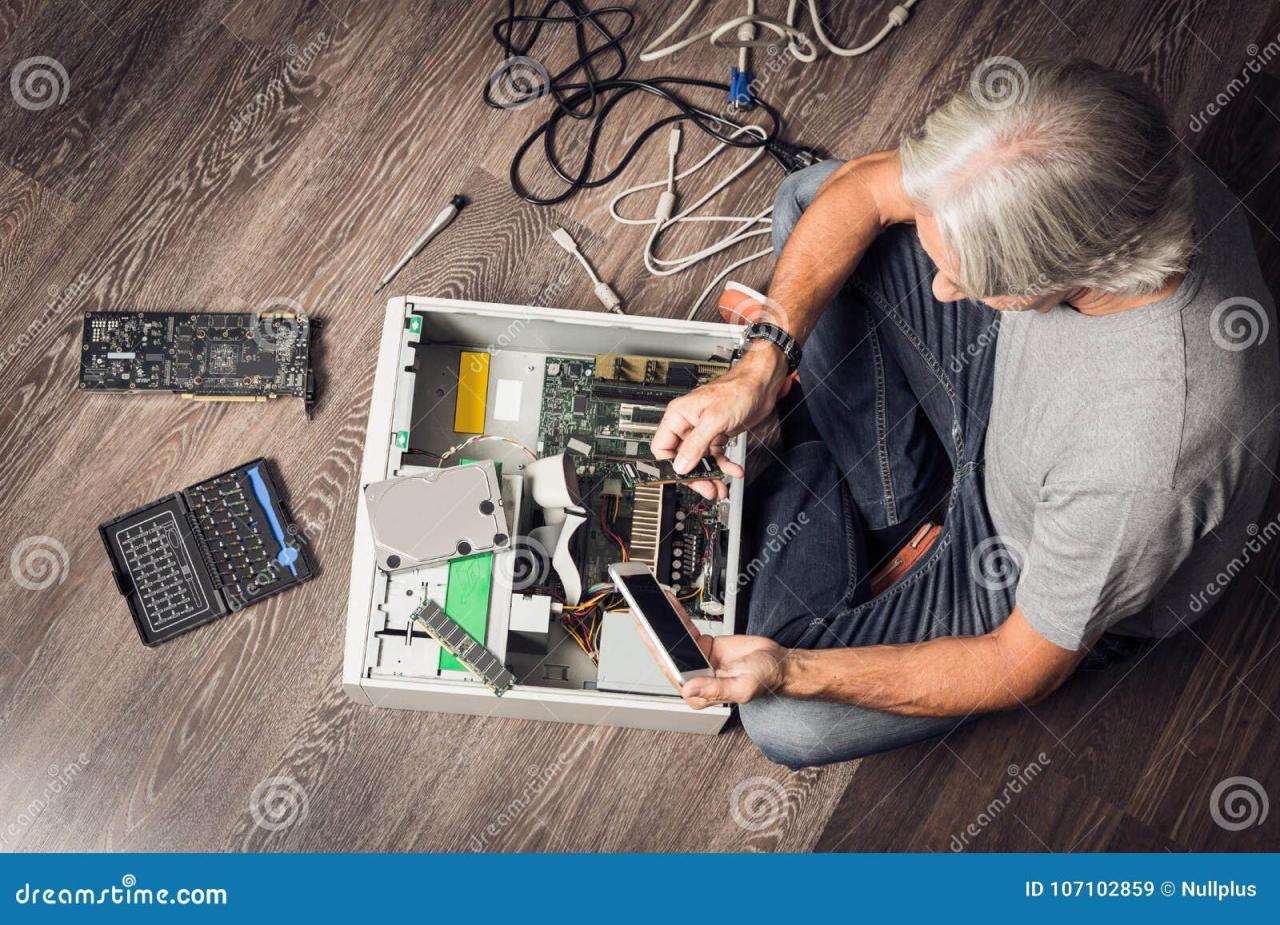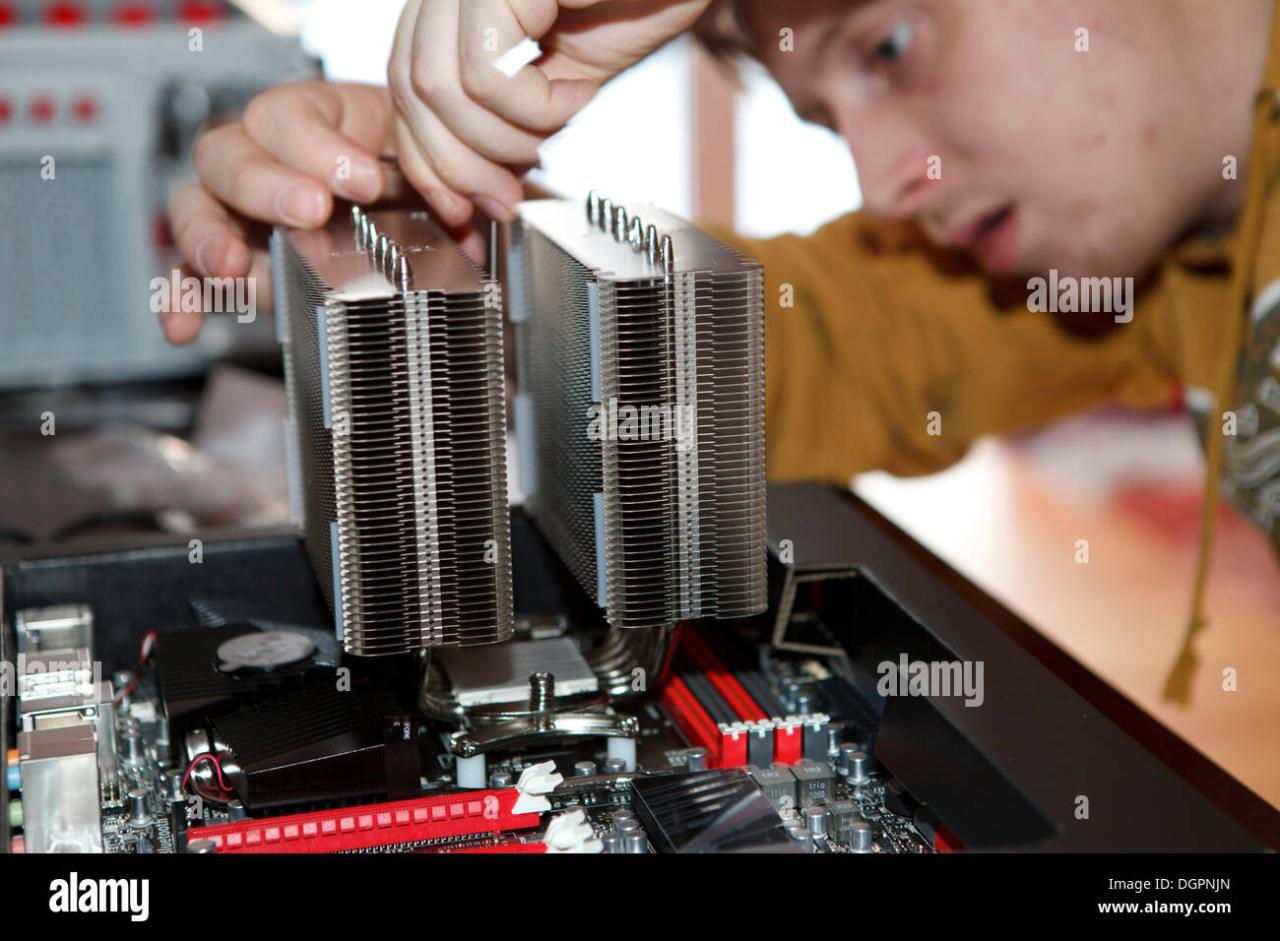PC Builder: Dive into the exciting world of custom PC building! This isn’t just about assembling parts; it’s about crafting a machine perfectly tailored to your needs and budget. We’ll guide you through every step, from choosing the right components to troubleshooting potential issues, ensuring you build a powerful and reliable system.
From understanding the nuances of CPUs and GPUs to mastering the art of cable management, we’ll cover it all. Whether you’re a seasoned tech enthusiast or a complete beginner, this comprehensive guide will empower you to build the PC of your dreams.
Building your own PC can be a rewarding experience, letting you customize every component. Before you dive into choosing your CPU and GPU, though, you might want to check if ChatGPT is working correctly; check the status here: is chatgpt down right now as it can be a helpful tool for researching parts. Once you’ve confirmed its availability, you can use it to compare specs and prices before making those crucial PC builder decisions.
PC Builder Market Overview
The PC builder market is a dynamic landscape experiencing significant growth, driven by factors such as the increasing demand for customized gaming PCs, the rise of remote work and online learning, and the continuous advancement in PC component technology. This market caters to a diverse range of users, from budget-conscious builders to professional gamers and content creators.
Key Players and Market Share
Major players in the PC builder market include established component manufacturers like Intel, AMD, NVIDIA, and Corsair, along with numerous smaller companies specializing in specific components or custom builds. Precise market share data fluctuates constantly, but Intel and AMD typically dominate the CPU market, while NVIDIA holds a significant share of the GPU market. Corsair and other companies excel in peripherals and case manufacturing.
Market Segmentation
The PC builder market is segmented based on price point and intended use. The budget segment focuses on affordability and basic performance, while the enthusiast segment prioritizes high-end components for maximum performance in gaming or content creation. The professional segment demands specialized components and configurations tailored for specific tasks, such as video editing or CAD modeling.
Pricing Strategies of Major PC Component Brands
| Component Brand | Pricing Strategy | Target Market |
|---|---|---|
| Intel | Premium pricing for high-end CPUs, competitive pricing for mainstream CPUs. | Enthusiasts, professionals, and mainstream users. |
| AMD | Aggressive pricing, offering strong performance at competitive price points. | Budget-conscious builders, enthusiasts, and mainstream users. |
| NVIDIA | Premium pricing for high-end GPUs, tiered pricing across different performance levels. | Enthusiasts, gamers, and professionals requiring high-end graphics. |
Components and Specifications
Choosing compatible components is crucial for a successful PC build. Incompatible components can lead to performance bottlenecks, system instability, or even complete failure. Understanding the specifications and functionalities of each component is essential for optimizing your build.
Building a powerful PC can be a rewarding project, especially if you’re into high-end gaming or video editing. The processing power needed for smooth 4K video editing, for example, is similar to what’s required to fly and control a drone efficiently. If you’re looking to capture stunning aerial footage, check out the latest models from dji drone canada to see what kind of processing power is required on the drone side.
Once you’ve got your footage, you’ll need that beefy PC to edit it! So, back to PC building – remember to choose compatible components.
Essential PC Components
The essential components of a PC include the CPU (Central Processing Unit), GPU (Graphics Processing Unit), RAM (Random Access Memory), Motherboard, Storage (SSD/HDD), and PSU (Power Supply Unit). Each component plays a vital role in the overall performance and functionality of the system.
Component Types and Specifications
CPUs vary in core count, clock speed, and cache size, impacting processing power. GPUs differ in memory capacity, CUDA cores, and clock speed, affecting graphical performance. RAM speed and capacity affect system responsiveness. Motherboards determine compatibility with other components. Storage devices vary in speed and capacity.
PSUs provide the necessary power for all components.
Sample Gaming Enthusiast PC Build
This build prioritizes high-end components for optimal gaming performance:
- CPU: AMD Ryzen 9 7950X3D
- GPU: NVIDIA GeForce RTX 4090
- RAM: 32GB DDR5-6000
- Motherboard: High-end X670E motherboard supporting PCIe 5.0
- Storage: 2TB NVMe PCIe 4.0 SSD + 4TB HDD
- PSU: 1000W 80+ Gold rated PSU
Building Process and Tools
Assembling a PC requires careful planning and execution. Safety precautions are essential to prevent damage to components or injury to yourself. Having the right tools makes the process much smoother.
Step-by-Step PC Assembly Guide
A detailed, step-by-step guide, including safety precautions, would be extensive. However, the core steps involve installing the CPU, RAM, and GPU onto the motherboard, then mounting the motherboard and other components into the case, connecting cables, and finally installing the operating system.
Necessary Tools and Equipment
- Anti-static wrist strap
- Phillips head screwdriver
- Zip ties
- Case fan installation tools (if needed)
Common Mistakes to Avoid
- Forgetting to install the CPU cooler
- Bending or damaging pins on the CPU or motherboard
- Incorrectly seating RAM modules
Installing CPU, GPU, and RAM
- CPU Installation: Carefully align the CPU with the socket and gently lower it into place. Secure with the lever.
- GPU Installation: Align the GPU with the PCIe slot and push firmly until it clicks into place.
- RAM Installation: Align the RAM module with the slots and press firmly until it clicks into place.
Troubleshooting and Maintenance
Troubleshooting PC problems requires systematic investigation and knowledge of common issues. Regular maintenance is crucial for the longevity and performance of your system.
Common PC Building Problems and Solutions

Common issues include no power, no boot, display problems, and overheating. Solutions range from checking power connections to reseating components or replacing faulty parts.
Troubleshooting a System That Won’t Boot
Troubleshooting a non-booting system involves checking basic connections, testing individual components, and using diagnostic tools. This often involves isolating the problem by testing individual components (RAM, GPU, etc.).
Importance of Regular PC Maintenance and Cleaning
Regular cleaning removes dust buildup, preventing overheating and improving component lifespan. This includes cleaning the case fans and heatsinks with compressed air.
Preventative Maintenance Checklist
- Clean the PC case regularly.
- Monitor temperatures using monitoring software.
- Update drivers regularly.
- Run malware scans periodically.
Software and Operating Systems

Installing an operating system and necessary drivers is the final step in the PC building process. Choosing the right operating system and software depends on your needs and preferences.
Installing an Operating System
Installing an OS involves creating a bootable USB drive, configuring BIOS settings, and following the on-screen instructions during installation. This process varies slightly depending on the operating system.
Operating System Comparison

Windows remains the most popular OS for gaming and general use, while Linux offers a more customizable and open-source alternative. macOS is primarily used on Apple hardware.
Necessary Drivers and Software, Pc builder

Drivers are essential for hardware to function correctly. Software choices depend on intended use (gaming, productivity, etc.).
Recommended Software Applications
| Category | Software | Function | Notes |
|---|---|---|---|
| Operating System | Windows 11 | Core operating system | Most common choice for gaming |
| Antivirus | Malwarebytes | Malware protection | Essential for security |
| Browser | Chrome/Firefox | Web browsing | Choose based on preference |
| Productivity | Microsoft Office | Document creation and editing | Optional, but widely used |
PC Builder Communities and Resources
Engaging with online communities provides access to valuable information, support, and inspiration. Numerous online resources offer comprehensive guides and tutorials.
Benefits of Online PC Builder Communities
Communities offer a platform to ask questions, share experiences, and learn from others. They provide a sense of community and support for beginners and experienced builders alike.
Online Resources for PC Building
Websites like Tom’s Hardware, AnandTech, and Linus Tech Tips offer in-depth reviews, tutorials, and news related to PC components and building.
Examples of Successful PC Builds
“My recent build features a Ryzen 7 5800X3D, RTX 3070, and 32GB of RAM. It runs all my games flawlessly!”
“I built a budget-friendly PC using an Intel i5-12400F and a GTX 1660 Super. It’s perfect for everyday tasks and some light gaming.”
Reputable Online Retailers
- Newegg
- Amazon
- Best Buy
Ultimate Conclusion
Building your own PC is a rewarding experience that blends technical knowledge with hands-on creation. You’ve learned about selecting compatible components, navigating the assembly process, and troubleshooting common problems. Now, armed with this knowledge, you’re ready to embark on your PC building journey. Embrace the challenge, celebrate the victories (and learn from the setbacks!), and enjoy the power of a custom-built machine.
FAQs
What’s the best time to buy PC components?
Sales around Black Friday and holidays often offer significant discounts. Keeping an eye on price-tracking websites can also help you snag deals.
How often should I clean my PC?
At least every 3-6 months, depending on your environment. Dust buildup can impact performance and cooling.
What happens if I install the wrong RAM?
Your system might not boot, or it could experience instability and errors. Always check motherboard compatibility.
Building your own PC can be a rewarding experience, letting you customize every component. Need a break from choosing RAM speeds? Try flexing your brainpower by finding some 10 letter words starting with ai , it’s a fun way to clear your head before diving back into selecting the perfect graphics card for your rig. Once you’ve refreshed your mind, you’ll be ready to tackle the next step in your PC building journey!
Can I upgrade components later?
Yes, many components are upgradeable, but always check compatibility with your existing motherboard and power supply.
